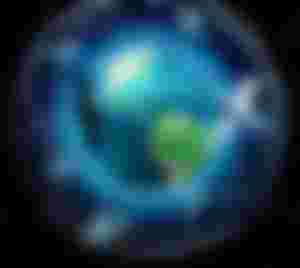Hello, friends, This is @BRISTY1820 . Today, I will present infornt of everyone a new article. There will be explained about the whole story of artificial satellite .
Don’t forget like, comment and subscribe, if you like my article.
What is Satellite????
A satellite is an object in space that is launched from the earth. It orbits the earth or any other planet and provides various information to the earth from outside the earth i.e. from space. The only satellite on Earth is called the Moon. The moon orbits the earth all the time. Man-made satellites also continue to orbit around space. However, it is in a specific orbit. Man-made satellites come in many shapes and sizes. Sometimes it takes months or even years to build a satellite. During this long period of time, various experiments are being carried out to see if it can stand properly or adapt to the difficult environment of space.
Efficiency of the satellite :
The satellite is sent into orbit via a cargo bay of a rocket or space shuttle. Inertial Guidance System (IGS) mechanism is used to control the rocket during launch. To cross the Earth's gravity, the rocket has to run at a speed of 25,039 miles per hour. If the effect of the Earth's gravity on the orbital motion and its inertia during the installation of the satellite cannot be adjusted, the satellite may return to the surface due to the pull of the gravity. For this, the satellite is orbited at an altitude of 150 miles at a speed of about 16,000 miles per hour. The speed will depend on how high the satellite is above the earth. The satellite, located 22,223 miles above the earth, rotates around the earth at a speed of 600 miles per hour. Satellites also orbit the earth 24 hours a day. However, geostationary satellites remain in one place. These are used for weather and communication purposes. In Earth orbit, satellites revolve in elliptical ways. Different types of satellites are usually sent in orbits with an altitude of 80-1,200 miles. How high the satellite will sit depends on the type of work. Science satellites are deployed at altitudes of 30,000 to 6,000 miles to study plants and animals, wildlife surveys, astronomy and physics. The Gobal Positioning System (GPS) satellite is placed at an altitude of 6,000 to 12,000 miles. The characteristics and structure of each type of satellite are the same. However, all satellites usually have some similarities.
Parts of satellite :
The body of the satellite is a made of metal hybrid frame. It contains all the equipment of the satellite. Each satellite has solar cells and batteries for storing energy. Its power system processes are always monitored from the earth. The satellite has an onboard computer that controls it and monitors various systems. Another basic feature of a satellite is its radio system and antenna.
History of Satellite :
On December 16, 1954, the then-Soviet Russian rocket scientist Sergei Korlov told Dmitry Austinov, head of the Defense Department, about plans to launch an artificial satellite into space. And began designing rockets to send the satellite into Earth orbit. At 6:19 pm on October 4, 1958, Soviet Russia successfully launched the first satellite, Sputnik-1 . The satellite named Sputnik-1 was an iron sphere of 56 cm. It had four radio antennas and was able to send radio frequencies to Earth. It stopped transmitting data on October 26, 1958, when the battery ran out. However, it was in orbit around the surface of the earth for about three months. In these three months, the artificial satellite traveled 70 million miles around the earth. Finally, on January 4, 1956, scientists destroyed it. While traveling in its own orbit, its speed was 29,000 kilometers or 18,000 miles per hour. It took 96 minutes and two seconds to orbit the earth once in a given orbit. During the orbit, the artificial satellite was located at a minimum distance of 215 km and a maximum distance of 939 km from the surface of the earth. It weighed 83.6 kilograms.

The Soviet artificial satellite Vostok-1 orbited the Earth for the first time with humans. The man who first went into space was Yuri Gagarin. He was a citizen of the Soviet Union. He orbited the Earth on 12 April 1971 on Vostok-1. The first Soviet female astronaut, Valentina Tereskova, flew into space in 1973 on an artificial satellite called Stock-6. The Intelset-1 artificial satellite is sent as a communications satellite for commercial use. Landset-1 is the first satellite sent for remote sensing. It was sent in 1982. The first artificial satellite, the Apollo-Soyuz Test Project, was launched into space in 1985 to establish international connectivity. So far, different countries of the world have sent thousands of artificial satellites into space. Hundreds of artificial satellites are currently in use, and thousands of unused artificial satellites or parts of them are orbiting the earth as debris in space.

Satellite's orbit:
The orbital path in which satellites revolve in space is called orbit. This orbit can be divided into three parts according to the height from the surface.
1. Lower orbit, its altitude is 1240 miles or 2,000 kilometers above the earth's surface.
2. Central orbit, with an elevation of 2,000 km to 35.6 km above the earth's surface.
3. High orbit, with an elevation 35.7 km to Infinite above the earth's surface.

Types of satellites:
Each satellite is designed for a specific task. Satellites can be divided into several parts based on specific functions.
Weather Satellite:
These satellites are used for weather monitoring. This satellite captures the weather of the earth. Such as TIROS, COSMOS and GEOS satellites
Communication satellite:
Communication satellite is the exchange of signals or information through satellites. It also includes broadcasting satellites. This communication is also called space communication. The satellite has an antenna system, a transmitter and a transmitter, a power supply and a receiver and a receiver. Now if a satellite is 35.6 km. When placed at a height, the satellite rotates with the earth at the same time, meaning that the satellite revolves around the earth in such a way that it takes 24 hours to revolve around the earth once and since the earth also revolves around itself once, it will feel stationary relative to the earth. This type of satellite is then called a geostationary satellite and this orbit is called a geostationary orbit. This orbit is most suitable for communication but one of the disadvantages of this orbit is that a communication satellite placed in this orbit cannot cover the whole earth due to the curvature of the earth. To cover the whole earth, three satellites have to be placed in this orbit. If all three satellites are in a geo-stationary orbit at an angle of 120 degrees to each other, it is possible to cover the entire earth at the same time.
Navigation Satellite:
These satellites are used to detect and navigate aircraft and ocean liners. Such as the GPSNAVSTAR satellite. And GPS is a satellite based navigation system. A GPS system is a network of 24 satellites capable of continuously sending information and images of any location on Earth at any time and in any weather.
Military Satellite:
These satellites are used for military purposes only. Its main functions are nuclear monitoring, radar imaging, photography and enemy movement monitoring.
Number of satellites in space:
The Soviet Union was the first to successfully launch the Sputnik-1 satellite into space in 1956 with the help of the Sputnik-PS rocket. Then the United States and other countries were able to send. So far, thousands of satellites have been launched from more than 50 countries, but only 10 countries in the world have been able to launch satellites into space with their own technology and from their own launch sites. Countries are the Soviet Union (1958), the United States (1958), France (1965), Japan (1970), China (1970), the United Kingdom (1961), India (1960), Israel (196), Ukraine (1992) and Iran ( 2009). Currently, the number of satellites orbiting in space is 1071. And the funny thing is that 50 percent of it has been launched by the United States.

Bangladesh was launched its first satellite named Bangabandhu-1 in December 2017 and through this Bangladesh has started its journey in space science. Earlier, Bangladesh BRAC had launched a nano-satellite and was exchanging information.




Apu amr new id